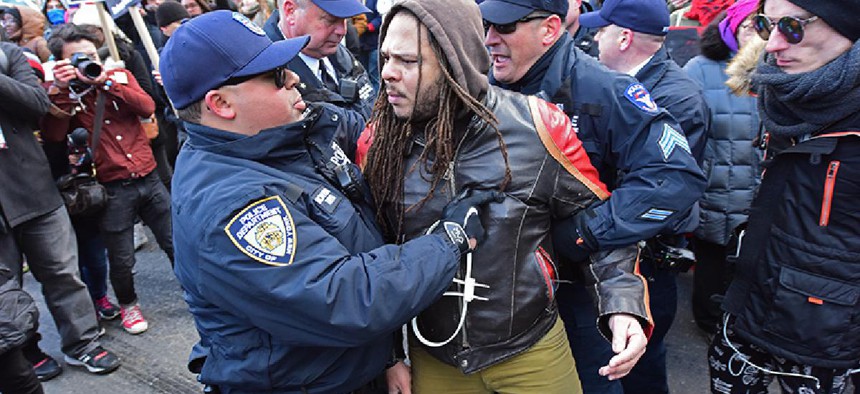The New York City Council passed the Right to Know Act on Tuesday, and nine months after it is signed into law police officers will be required to offer business cards after many street stops. But before that happens, the police will be ordering millions of business cards – and based on budget estimates and recent data on police stops, they may end up paying for far more cards than they know what to do with.
Implementing the new policy would cost $5.9 million in fiscal year 2019, when the law would take effect, according to an initial fiscal impact report by the City Council. After implementation, the annual cost would be $3.8 million for replacement cards as well as cards for new officers.
RELATED: Watch Ritchie Torres defend Right to Know in emotional speech
A City Council spokesperson told City & State that the cost estimates are based on the current amount the city pays for business cards and on calculations about how much it would cost to provide all service members with a box of 1,000 cards a year. Additionally, about one fifth of the police force is expected to need two boxes a year.
Since the city has about 36,000 police officers, according to the NYPD’s website, that would mean printing at least 36 million cards, and millions more for cops who need a second box.
That sounds like a lot of business cards – but is it enough to keep cops from running out?
It’s worth noting that the original version of the bill, which would have encompassed the majority of daily police interactions, was far broader than the one that ultimately passed. But the final bill language excludes traffic and pedestrian stops not intended to question someone suspected of a crime. For example, if an officer stops someone on the street to ask if they saw any evidence of a crime, that officer will not be required to provide a business card. Thus, there would be fewer interactions in which an officer would have to hand out a card.
Looking at past stop and frisk data gives a rough indication of how many cards might be needed. NYPD data shows that officers recorded a total of 12,404 stops last year on the suspicion of a crime. While this number does not include every interaction between an officer and a civilian – DWI checkpoints and home searches are also included – it does constitute a large portion of the types of stops the Right to Know Act would cover. The bill also requires business cards be given to victims of and witnesses to crimes.
To sum it up: Even if every NYPD officer received just one 1,000-card box, that would add up to 36 million cards – far more than would be needed for perhaps tens of thousands of interactions.
RELATED: The best New York City Council members
The police department’s business card order will come with a hefty price tag – $5.9 million in the first year – although it’s just a fraction of the city’s $80 billion-plus budget.
The city currently has a contract with the New Jersey-based A to Z Mailroom & Shipping to provide every city agency with business cards if they don’t print in-house. That encompasses 45 agencies in total. As of now, that doesn’t include the NYPD, but the company is in preliminary talks with the police department about providing those cards in the future.
The contract A to Z Mailroom and Shipping has with the city, which lasts until June 30, 2019, has a current estimated value of $656,712.50. The company has no estimates about the cost of providing business cards for the NYPD.
But could the city pay less? If the NYPD were to use the well-known printing company Vistaprint, for example, the police department could theoretically buy each officer a box of 2,000 cards at $40 a box. This totals about $1.44 million and accounts for any of the officers who are expected to need more than 1,000 cards.
Regardless of the price, the 36 million cards – or more – should be enough. In fact, that would be enough for the NYPD to give every single New Yorker four business cards a year, and still have some left over for whoever wants more.


